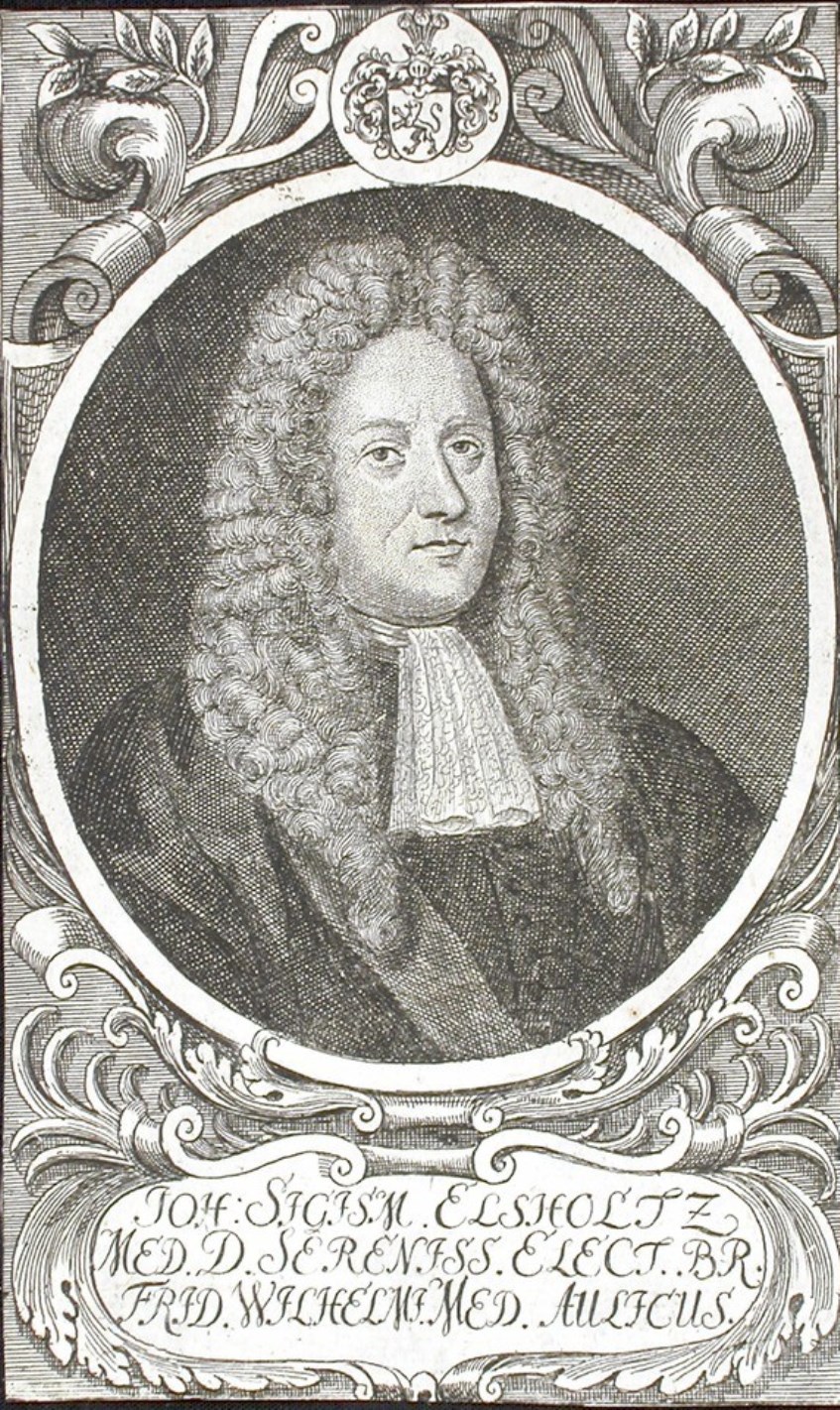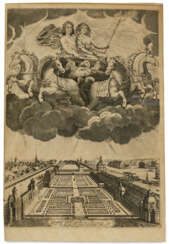иоганн зигисмунд эльсхольц (1623 - 1688)

Johann Sigismund Elsholtz (also Elßholtz, Elßholz, Elsholz, Latin Elsholtius) was a German physician, botanist and chemist, a pioneer of hygiene.
Elsholtz studied at the universities of Wittenberg, Königsberg, and Padua, where he received his doctorate. In 1654, he published Anthropometry, written for artists and astrologers as well as students of medicine and physiognomy. The book also explored the supposed relationship between the proportions of the human body and morbidity. Elsholtz was a very versatile scientist and worked in the fields of horticulture, botany, alchemy, astrology, dietetics and medicine, among others.
Elsholtz was later appointed court botanist, alchemist and physician to Elector Friedrich Wilhelm of Brandenburg (1620-1688), and in 1657 was placed in charge of his botanical gardens in Berlin, Potsdam and Oranienburg. In 1672 his treatise Vom Garten-Baw: Oder Unterricht von der Gärtnerey auff das Clima der Chur-Marck Brandenburg was published in Berlin. ("From the Garden Bow or Lessons in Gardening in the Climate of Chur-Marck Brandenburg." It presents the latest gardening techniques for the German climate, discussing flower gardens and their design, vegetable gardens, medicinal gardens, and vineyard care and design.
Elsholtz was a German pioneer in the field of cleanliness and nutrition. Generally speaking, the term "hygiene" first appeared in German in 1682 in his Dietetikon. It is the term he uses to describe the principle of maintaining good health. In his book, the doctor makes recommendations for healthy eating and drinking. He calls for clean water and good air and emphasizes the importance of personal hygiene. Elsholtz was one of the first to administer intravenous injections to people around 1665.


